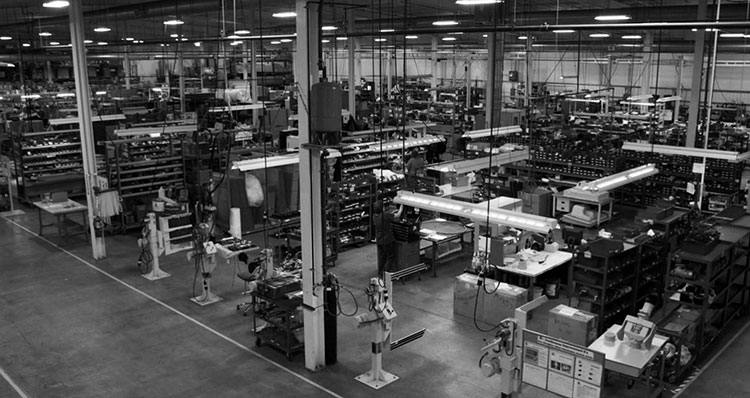Guidance: Tips to Reduce Injection Moulding Costs.

Injection moulding is a fast, highly accurate process that is capable of creating huge amounts of components fast and with no discernible manufacturing or material differences. Once a mould has been created, being high tensile steel, it will generally last for the lifetime of the component, which may extend to many thousands or even millions of items.
But it has to be said that injection moulding is considered to be a fairly expensive process in which the initial outlay for the mould is amortized over the thousands of components it produces, making it increasingly cost-effective as production number rise. This fact makes the injection moulding process generally unsuitable for lower run components, much to the detriment of an industry that craves good dimensional stability but is also conscious of costs.
However, while injection moulding may be seen as an expensive option, there are several ways in which it can make a lot more cost-effective and by these means, become a credible alternative as a manufacturing route. There are a number of design elements that can be considered, and may reduce the costs of parts that you may want, making injection moulding a credible process for much lower production runs. Some of the main ways of controlling the costs with the injection moulding process are:
Mould Material. Moulds are often intended for years of faultless operation so that means they have to be hardwearing, and with the need to retain dimensional accuracy at elevated operating temperatures, mould manufacturers generally choose a high tensile or stainless steel as the material of choice. But this is not only expensive stock but difficult to work, adding significantly to the initial cost of the mould. In response to this, manufacturers are offering the use of high-grade aluminium as a mould material. In addition to this, it is possible for an aluminium body to house a much smaller high-grade steel mould. These options offer lower overall costs since the aluminium is much easier to work and gives far superior heat-transfer properties, removing excess temperature from the whole mould which then significantly reduces cycle time.
Part size. Obviously, the bigger your component, the larger the mould has to be to accommodate it, and that is where the lion’s share of the cost comes in. The moulds for this kind of equipment are machined from high tensile steel by craftsmen and that means that they are going to be expensive. If you limit the size of your component, you will also limit the actual manufacturing price and that can be quite significant.
Cut back on features. Injection moulding offers the possibility of creating highly complex parts and that tends to let designers run away with their imagination a bit. While there are certain must-haves in terms of engineering design, many developers tend to put unnecessary features in and those will cost you money. There needs to be radii on corners to remove the possibility of stress build-up, and certain other essential design elements are less necessary and likely only to be a whim of the designer. Applying these will cost money so plainly not having them will reduce costs. Once you have a design for your component, apply some design rules to the mould and see if you can simplify it to reduce costs.
Design for Manufacture. Often called DFM and allied to the process of reducing or simplifying features, this is a process that seeks to ensure that a component meets its requirements in the most cost-effective way. DFM concerns itself with certain specifics of mould design, including;
- Technical Specifications Aligning with Process Capabilities. Analysis via CAD software can ensure that certain elements such as materials, wall thickness, draft angles and gate locations are optimised to ensure that manufacture is as simple as possible.
- Minimisation of components. Adding internal components also adds money. Simplify your designs so that you don’t have the need for expensive bolt-in features.
- Minimal Assembly Requirements. A simplified design should mean that assembly – and periodic cleaning – of the mould is kept to a minimum and therefore costs are much lower.
- One-Hit manufacture. Designing your mould to reduce secondary processing requirements will help keep overall costs down, and minimise through-put time too, which is widely seen as a hidden cost.
Modify your existing moulds. With mould design and manufacture so expensive, you need to assess whether it is actually more expedient to take an existing mould and have it modified to create the new component. In this way, you cut out a lot of the background work required to manufacture the mould tool, which is a huge cost saving.
Have you read?
World’s Best Countries To Invest In Or Do Business For 2018
RANKED: The World’s Top 10 Richest Countries (2017-2027)
Revealed: Top Rated Visitor Attractions In Every Country In The World
The World’s Safest Cities Ranking, 2018
Add CEOWORLD magazine to your Google News feed.
Follow CEOWORLD magazine headlines on: Google News, LinkedIn, Twitter, and Facebook.
Copyright 2024 The CEOWORLD magazine. All rights reserved. This material (and any extract from it) must not be copied, redistributed or placed on any website, without CEOWORLD magazine' prior written consent. For media queries, please contact: info@ceoworld.biz








